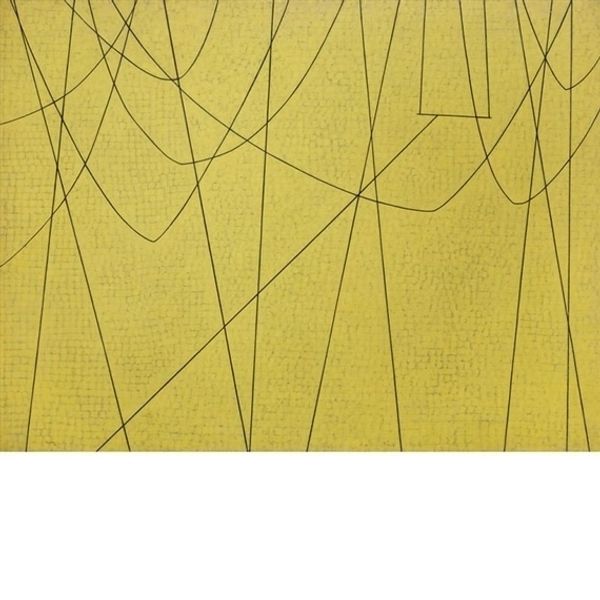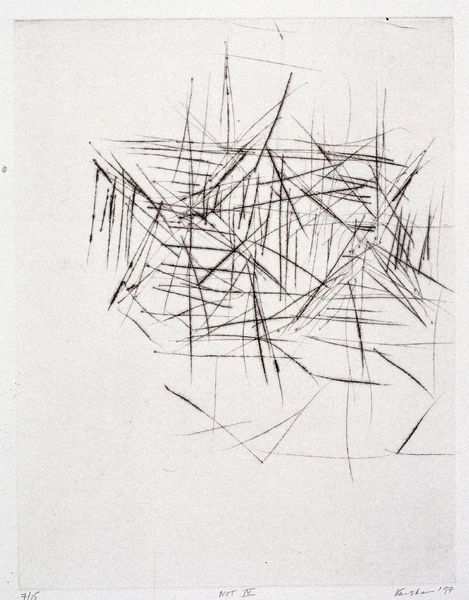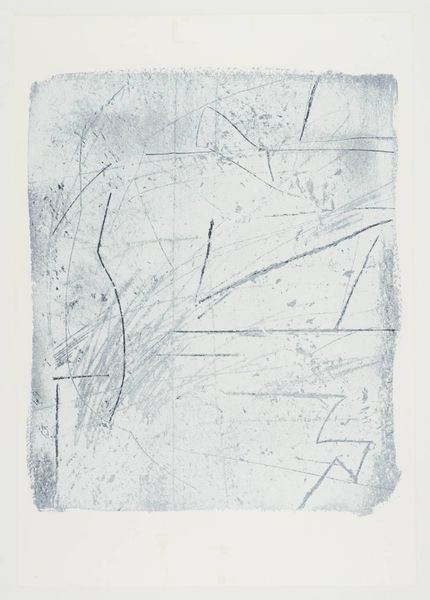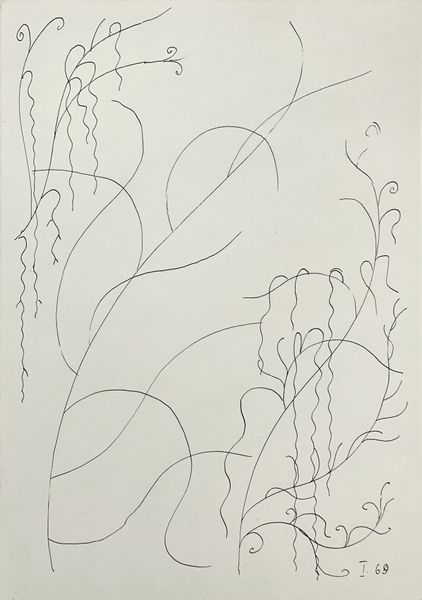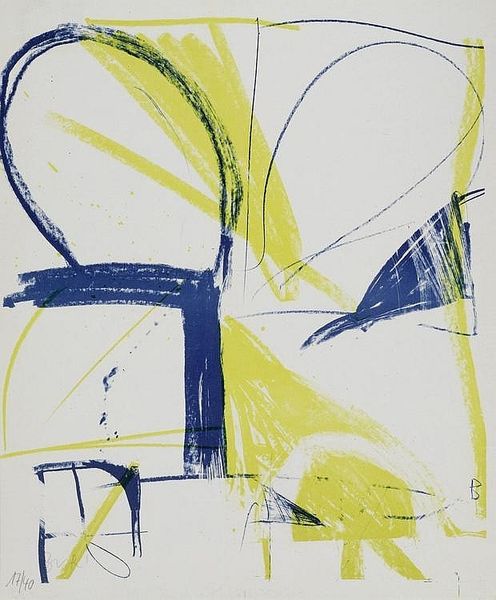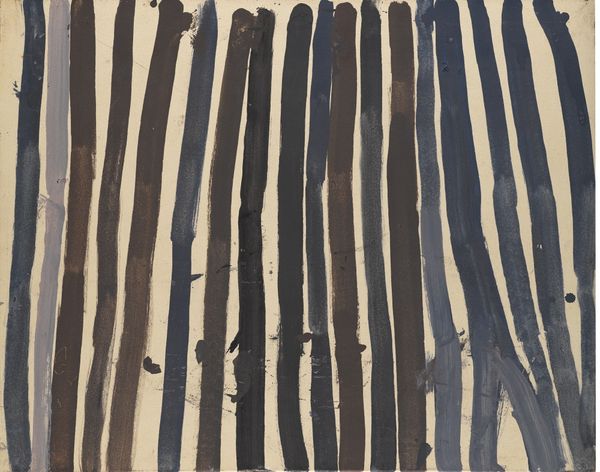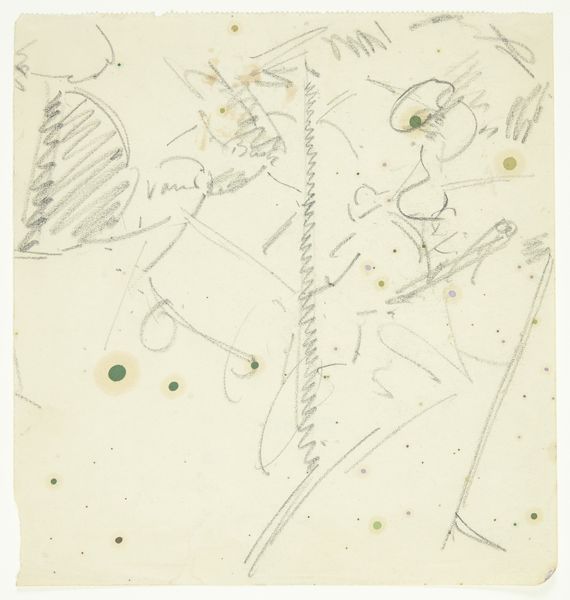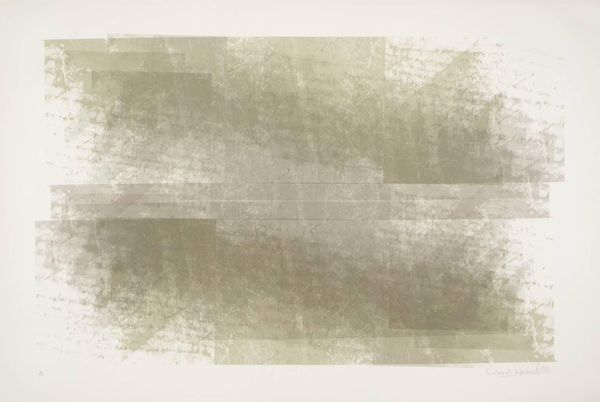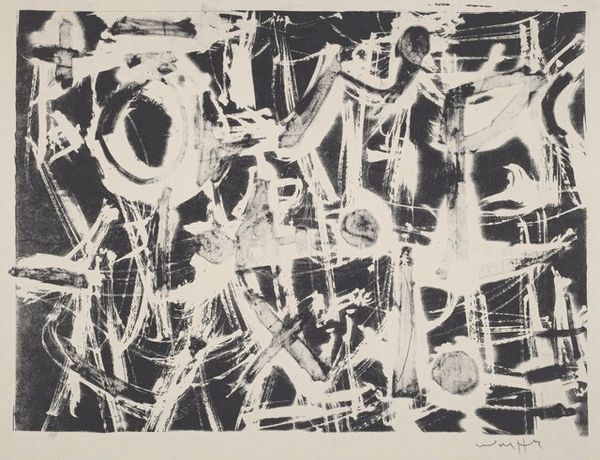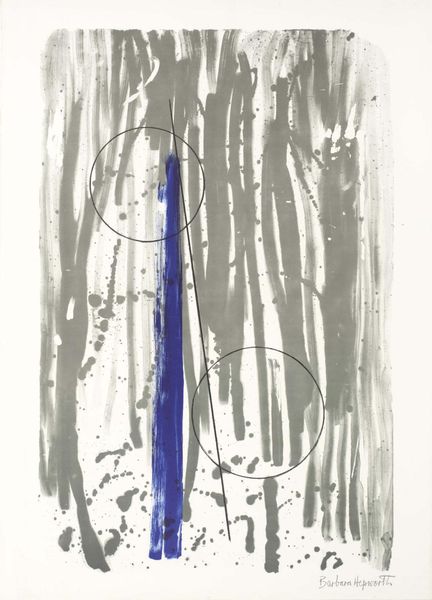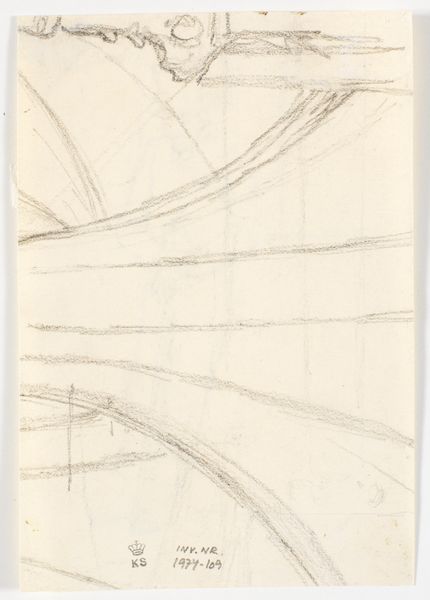
#
abstract-expressionism
#
geometric
#
abstraction
#
line
Copyright: Public domain Egypt
Editor: This is O. Louis Guglielmi's "Circus in White" from 1954. Looking at this artwork, I’m immediately drawn to the lines and their spatial arrangement; there's something whimsical and almost musical about it, though I'm unsure how to describe it further. What do you see in this piece? Curator: What I see is a deconstruction of labor, really. These fine lines and bright dots must have been meticulously applied. Consider the artist's hand: its steadiness, the control required to create these seemingly simple gestures. It compels me to ask: who benefits from this kind of skilled work? And how does this reflect social tensions of the time? Editor: I hadn't considered it in terms of labour. The ‘circus’ element makes me think of entertainment for a wealthy class, almost as an escape. So does the careful construction hint at class divisions in post-war America? Curator: Precisely! Think about the materials available, their accessibility, and the artist's choice to render a circus – traditionally a site of communal amusement – in such an abstract, almost detached way. It speaks to the artist’s social awareness, and maybe, even a subtle critique. Why does Guglielmi depict joy this way, through such restraint? Editor: So it's less about the image of a circus and more about the labor and resources that allowed such an image to be produced and consumed, almost like deconstructing how we find enjoyment. Curator: Exactly! It's easy to get lost in the formal aspects of the composition, but understanding the material conditions under which the artwork was made gives us a deeper understanding of its potential meanings. Editor: That’s a great point, by focusing on material and labour it creates such an alternate perspective! Thank you. Curator: My pleasure. Thinking about art through its production reveals layers we might otherwise miss.
Comments
No comments
Be the first to comment and join the conversation on the ultimate creative platform.
